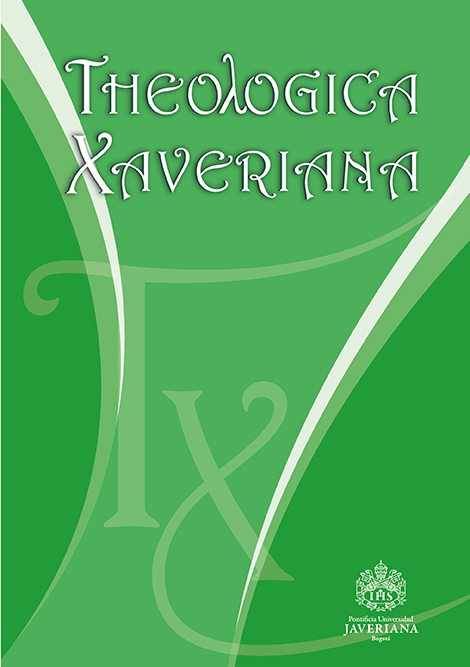Abstract
The reading of the “Signs of the Times”, a determining concept in the theology of the second half of the 20th century, guided the renovating path of the Second Vatican Council under the impulse of the magisterium of John XXIII, but it is formally mentioned only once in the final document due to biblical and Christological objections from Catholic and Protestant theologians. In the post-council, this concept allowed the renewal of Latin American and world theology because it created the foundations of an inductive theology. Despite its theological contribution, the concept has been stereotyped, misinterpreted and trivialized.
The objective of the research has been to identify the meaning and scope of the term in Marie-Dominique Chenu, an influential theologian of the Second Vatican Council, who championed the alleged aggiornamento from the reading of the signs of the times. Before the Council, this method allowed him to develop theologies of earthly realities such as the theology of work. From the analysis of various writings by the author, the nature of the signs of the times is identified as a criterion for their discernment in theologies attentive to both the revealed data and the evolution of history, the objections to their use in the conciliar environment are mentioned and the relevance of the use of the term signs of the times by some authors is analyzed when referring to all kinds of changing situations today.
Now that the expression “reading the signs of the times” is the leitmotif of theologians and pastors close to the people, driven by the novelty of Pope Francis and in the line of Gaudium et Spes, it is convenient to review the history of the concept, specify its scope and avoid its indiscriminate use. Chenu continues to be a proven master for such an operation; his attention to history teaches the conscientious function that all embodied theology should promote.
Acta Synodalia Sacrosancti Concilii Oecumenici Vaticani II, Vol. IV, pp. 564.
Archivo RAI. Riflessioni di un teólogo (video). YouTube, https://www.youtube.com/watch?v=wYIypXO_OqY (consultado el 8 de julio de 2020).
Azcuy, Virginia: “El discernimiento teológico-pastoral de los signos de los tiempos en Medellín”. Revista Teología XLIX/107 (2012): 125-150.
Chenu, Marie-Dominique. El Evangelio en el tiempo. Barcelona: Ed. Estela S.A., 1966.
_____. ¿Es ciencia la teología? Andorra: Ed. Casal i Vall, 1959.
_____. Hacia una teología del trabajo. Barcelona: Estela S.A., 1960.
_____. “Historicidad e inmutabilidad del ser cristiano”. En El ateísmo contemporáneo, por VV.AA., 4, 151-166. Madrid: Cristiandad, 1971.
_____. “La teología del trabajo frente al ateísmo”. En El ateísmo contemporáneo, por VV.AA., 4, 295-309. Madrid: Cristiandad, 1971.
_____. “Les événements et le royaume de Dieu”. Informations Catholiques Internationales 250 (1965): 18-19.
_____. “Les signes des temps”. Nouvelle Revue Théologique 87/1 (1965): 29-39.
_____. “Un pontificado ha entrado en la historia”. En El Evangelio en el tiempo, por M-D. Chenu, 179-188. Barcelona: Ed. Estela S.A., 1966.
_____. Une école de théologie: le Saulchoir. Paris: Du Cerf, 1985.
Concilio Vaticano II. Concilio Ecuménico Vaticano II. Constituciones. Decretos. Declaraciones. Dirigido por Conferencia Episcopal Española. Madrid: Biblioteca de Autores Cristianos, 1993.
Costadoat, Jorge. “Los ‘signos de los tiempos’ en la teología de la liberación. Teología y vida 48 (2007): 399-412.
Gasda, Elio. El sentido del trabajo. Madrid: Universidad de Comillas, 2010.
Geffré, Claude. “Théologie de l’incarnation et théologie des signes des temps chez le père Chenu”. En Marie-Dominique Chenu. Moyen-âge et modernité, editado por José Doré y Jacques Fantino, 131-153. Paris: Centre d’Études du SaulchoirÉditions du Cerf, 1997.
González Moralejo, Rafael. El Vaticano II en taquigrafía. La historia de la Gaudium et spes. Madrid: Biblioteca de Autores Cristianos, 2000.
Gray, Janette. M-D Chenu’s Christian Anthropology: Nature and Grace in Society and Church. Adelaide: ATF Theology, 2019.
Hünermann, Peter. “¿Cómo reconocemos los signos de los tiempos?” En Reforma de estructuras y conversión de mentalidades. Retos y desafíos para una Iglesia sinodal, coordinada por Rafael Luciani y Carlos Schickendantz, 21-32. Madrid: Edelvives, 2020).
Juan XXIII. “Carta encíclica Pacem in Terris sobre la paz entre todos los pueblos que ha de fundarse en la verdad, la justicia, el amor y la libertad (1963)”. Vatican, http://w2.vatican.va/content/john-xxiii/es/encyclicals/documents/hf_j-xxiii_enc_11041963_pacem.html (consultado el 2 de febrero de 2014).
_____. “Constitución apostólica Humanae salutis por la que se convoca al Concilio Vaticano II (1961)”. Vatican, http://w2.vatican.va/content/john-xxiii/es/apost_constitutions/1961/documents/hf_j-xxiii_apc_19611225_humanaesalutis.html (consultado el 2 de febrero de 2014).
Marx, Karl. “Primer manuscrito”. Universidad Complutense Madrid, http://pendientedemigracion.ucm.es/info/bas/es/marx-eng/44mp/1.htm (consultado el 20 de mayo de 2014).
Potworowski, Christophe F. Contemplation and Incarnation. The Theology of Marie-Dominique Chenu. Canada: McGill-Queen’s University Press, 2001.
Schickendantz, Carlos. “Signos de los tiempos: sentido y vigencia de una forma de proceder teológicamente”. Revista Albertus Magnus 9/2 (2018): 87-106.
Silva, Eduardo. “Una teología de los signos de los tiempos latinoamericanos. Validez, límites y porvenir de una hermenéutica teológica del Concilio”. Teología y vida 50 (2009): 41-58.
Tertuliano. “Apologeticus Adversus Gentes Pro Christianis”. En Patrología latina 1, 377.

This work is licensed under a Creative Commons Attribution 4.0 International License.


